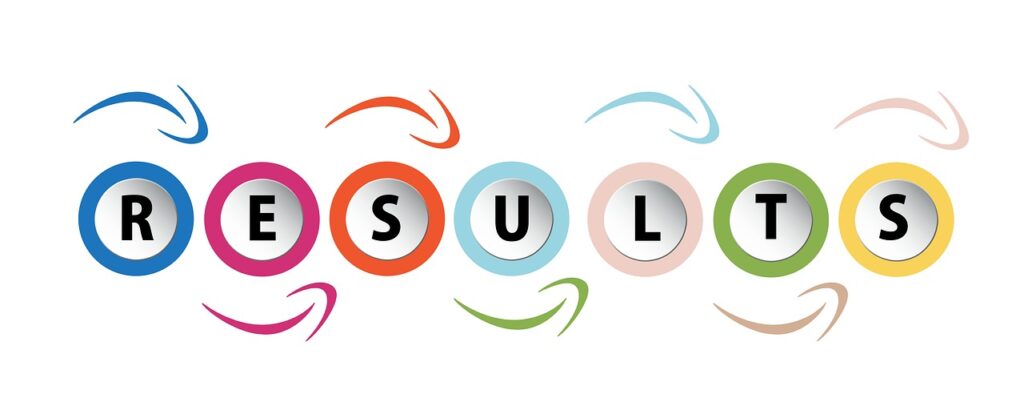Are you on the hunt for the perfect job? One that not only offers a fulfilling career but also ensures a healthy work-life balance? Achieving a harmonious equilibrium between work and personal life is more important than ever, and finding a company that prioritizes this balance is crucial. But how can you determine if a company truly provides a healthy work-life balance? In this article, we will explore some key factors and strategies that can help you assess whether a company can offer you the flexible and supportive environment you desire. So, let’s dive in and discover your path to work-life harmony!

Researching the Company
When you’re considering a new job opportunity, it’s important to research the company to determine if it offers a healthy work-life balance. One of the first steps in your research should be checking the company’s website. Here, you can gather information about the company’s values, mission, and culture. Pay attention to whether they emphasize work-life balance and employee well-being. Look for any specific initiatives or programs they mention that promote these concepts.
Reading reviews and testimonials can also provide valuable insights into the company’s work-life balance. Websites like Glassdoor and Indeed offer anonymous reviews from current and former employees. Take the time to read through a variety of reviews to get a well-rounded perspective. Look for recurring themes or patterns that indicate whether work-life balance is a priority for the company.
In addition to reviews, it’s worth looking into any awards or recognitions the company has received. Organizations that prioritize work-life balance often receive accolades for their efforts. Look for mentions of awards like “Best Place to Work” or “Top Employer.” These awards demonstrate that the company values employee well-being and provides a healthy work-life balance.
While researching the company, exploring its culture is crucial. Company culture plays a significant role in determining work-life balance. Look for information about whether the company promotes a healthy work-life balance, offers flexibility, and fosters a positive and supportive environment. Pay attention to any initiatives they mention, such as wellness programs, social events, or flexible schedules. A company with a strong work-life balance culture is more likely to prioritize the well-being of its employees.
Another important factor to consider is the company’s employee turnover rates. High turnover can be an indicator of poor work-life balance and employee dissatisfaction. Analyzing turnover rates can help you gauge whether employees are staying with the company long-term, which suggests a positive work-life balance. If turnover rates are high, it may be a red flag that the work-life balance is not ideal at the company.
Assessing Work-life Balance Policies
Once you have gathered information about the company’s overall approach to work-life balance, it’s important to delve deeper into their specific policies and practices. Assessing work-life balance policies can provide a more comprehensive understanding of what to expect as an employee.
Reviewing time-off policies is a crucial step in evaluating work-life balance. Look for information about vacation days, paid time off, and sick leave. A company that offers generous time-off policies values work-life balance and recognizes the importance of taking breaks and maintaining one’s well-being.
Flexible working arrangements are becoming increasingly important in today’s workforce. Evaluate the company’s stance on flexible schedules, remote work options, and job-sharing opportunities. If a company supports flexible working arrangements, it indicates that they understand the importance of accommodating employees’ personal needs and responsibilities.
In addition to time-off policies and flexible arrangements, family and parental leave policies are worth examining. Look for information about maternity and paternity leave, adoption leave, and childcare support. A company that supports employees during important life events and provides support for their families is likely to prioritize work-life balance.
Work hours and expectations are key factors to consider when assessing work-life balance policies. Look for information about typical work hours, overtime expectations, and whether the company promotes a healthy work-life balance by discouraging excessive work hours. A company that values work-life balance will ensure that employees have a reasonable workload and are not perpetually overworked.

Engaging with Current and Former Employees
Actively engaging with current and former employees can provide invaluable insights into a company’s work-life balance. Talking to current employees is an excellent way to understand the day-to-day work environment and whether work-life balance is a reality. Ask questions about the company culture, flexibility, and how employees manage their work and personal lives. Their first-hand experiences can give you a realistic view of the work-life balance at the company.
Connecting with former employees can offer a different perspective on work-life balance within the company. Former employees may be more candid about their experiences and can provide insights into any potential challenges or concerns. Utilize professional networking platforms such as LinkedIn to reach out to former employees. Ask about their experiences and whether they felt the company prioritized work-life balance.
Attending company events or presentations is another excellent way to engage with employees and gain insight into work-life balance. These events often provide an opportunity to interact with employees in a more informal setting and ask questions about their experiences. Pay attention to the work-life balance initiatives that the company highlights during such events.
Seeking testimonials from ex-employees can provide a broader perspective on work-life balance within the company. Reach out to former employees and ask them to share their experiences regarding work-life balance. Their testimonials can give you a glimpse into the company’s practices and policies from the perspective of someone who has moved on.
Investigating Workload and Stress Levels
To determine if a company offers a healthy work-life balance, it’s crucial to investigate workload and stress levels. A company that promotes work-life balance will prioritize manageable workloads and provide support to help employees manage stress.
Consider the workload and job descriptions of employees within the company. Evaluate whether the expectations are realistic and if the responsibilities align with the job title. Excessive workload can lead to long hours, burnout, and a poor work-life balance. Ensure that the workload is reasonable and allows for a healthy integration of work and personal life.
Assessing stress management programs is another essential aspect of determining work-life balance. Look for information about any initiatives or resources the company offers to support employees’ mental and emotional well-being. Programs such as mindfulness, employee assistance programs, or stress reduction workshops indicate that the company values work-life balance and understands the importance of managing stress.
Explore work-related stress factors within the company. Consider factors such as high-pressure deadlines, intense work environments, or lack of support systems. If employees consistently encounter significant stressors, it may indicate that the company does not prioritize work-life balance. A company that actively works to minimize work-induced stress is more likely to foster a healthy work-life balance.
Researching employee burnout rates can provide valuable insights into work-life balance. High burnout rates suggest that the company’s work culture and policies may not support a healthy balance between work and personal life. Look for resources such as surveys or studies that provide data on burnout rates within the company.
Observing health and well-being initiatives within the company is another way to gauge work-life balance. Assess whether the company actively promotes initiatives related to physical, mental, and emotional well-being. This can include activities such as fitness classes, wellness challenges, or access to mental health resources. A company that prioritizes employee well-being is more likely to offer a healthy work-life balance.

Analyzing Work-life Balance Initiatives
Work-life balance initiatives play a significant role in determining whether a company offers a healthy work-life balance. When researching a company, it’s essential to explore the specific initiatives they have in place to support their employees’ work-life balance.
Identifying flexible scheduling options is a crucial aspect of assessing work-life balance initiatives. Look for information about flexible start and end times, compressed workweeks, or customized schedules. A company that recognizes the diverse needs and responsibilities of its employees is more likely to offer flexible scheduling options.
Evaluate remote work opportunities within the company. Remote work has become increasingly popular, especially in recent times. Companies that provide remote work opportunities demonstrate a commitment to work-life balance by allowing employees to work from home or other preferred locations. Assess whether the company has clear policies and technological infrastructure to enable effective remote work.
Assessing health and wellness programs can provide insight into work-life balance initiatives. Look for information about programs that promote physical fitness, mental well-being, and work-life integration. Such initiatives can include gym memberships, wellness coaching, or stress management workshops. A company that actively invests in employee well-being is more likely to prioritize work-life balance.
Consider whether the company provides work-life balance training. Training programs that focus on time management, prioritization, or work-life integration can help employees maintain a healthy balance between work and personal life. Evaluate whether the company supports ongoing learning and development in this area.
Exploring family-friendly benefits is essential to understanding a company’s commitment to work-life balance. Look for information about childcare assistance, maternity and paternity leave, adoption benefits, or resources for parents. A company that provides family-friendly benefits recognizes the importance of supporting employees in their personal lives and creating a balance between work and family responsibilities.
Examining Communication and Feedback Channels
Effective communication and feedback channels are vital components of a healthy work-life balance. When considering a company’s work-life balance, it’s important to assess how communication is facilitated within the organization and how employees can provide feedback.
Assess the managerial support systems within the company. Look for information about whether managers prioritize open and transparent communication and actively support employees in achieving work-life balance. A company with strong managerial support is more likely to have a healthy work-life balance culture.
Review the communication platforms used by the company. Evaluate whether they facilitate efficient and effective communication among employees and teams. Look for platforms that encourage collaboration, knowledge sharing, and work-life integration. A company that invests in modern communication tools demonstrates a commitment to work-life balance by enabling flexibility and accessibility.
Explore employee feedback programs within the company. Look for initiatives that prioritize gathering feedback from employees regarding work-life balance and other aspects of their work environment. Companies that actively seek employee input demonstrate a commitment to continuous improvement and employee well-being.
Analyze the performance evaluation processes within the company. Consider whether the company evaluates employees based on their outcomes rather than the sheer number of hours worked. A company that values results over excessive hours is more likely to have a healthy work-life balance.
Consider whether the company has work-life balance advocates or employee resource groups dedicated to promoting work-life integration. These groups can support employees, offer resources, and advocate for work-life balance initiatives within the company. A company that recognizes the importance of work-life balance will actively engage employees in fostering a supportive and inclusive work environment.

Checking Employee Assistance Programs
A company’s employee assistance programs can provide valuable support for work-life balance. These programs offer resources and assistance to employees to help them manage their personal and professional lives effectively.
Understanding counseling and mental health support within the company is crucial when evaluating work-life balance. Look for information about access to counseling services, mental health resources, or employee assistance hotlines. A company that prioritizes mental well-being demonstrates a commitment to supporting its employees’ work-life balance.
Examining financial wellness programs can also offer insights into work-life balance initiatives. Financial stress can significantly impact an employee’s ability to maintain a healthy work-life balance. Look for information about programs that provide financial planning, debt management, or retirement support. A company that supports employees’ financial well-being recognizes that it is closely tied to their overall work-life balance.
Look for work-life balance resources within the company. These can include educational materials, workshops, or online resources specific to achieving work-life balance. A company that provides resources to help employees navigate the challenges of work-life integration demonstrates a commitment to their well-being.
Review any employee wellness surveys the company conducts. These surveys can provide valuable data on employee perceptions of work-life balance and help the company identify areas for improvement. A company that actively seeks feedback through wellness surveys shows a commitment to ongoing evaluation and improvement.
Assess any work-life balance metrics the company tracks. Companies that measure and monitor work-life balance metrics are more likely to prioritize this aspect of their employees’ well-being. Look for metrics such as employee satisfaction with work-life balance, turnover rates, or utilization of flexible work arrangements. Monitoring these metrics demonstrates that the company takes work-life balance seriously.
Analyzing Company’s Response to Work-life Balance
A company’s response to work-life balance is an important indicator of its commitment to fostering a healthy work-life balance for its employees.
Checking the company’s mission statement can provide insights into its core values and whether work-life balance is a priority. Look for inclusion of work-life balance or related concepts in the mission statement. A company that explicitly emphasizes work-life balance in its mission statement is more likely to have a strong commitment to this aspect of employee well-being.
Examining corporate social responsibility initiatives can also shed light on a company’s stance on work-life balance. Look for information about how the company supports the well-being of its employees and promotes work-life balance within the community. Companies that actively engage in initiatives related to work-life balance demonstrate a commitment to the overall well-being of their employees.
Evaluating diversity and inclusion initiatives is another way to gauge a company’s approach to work-life balance. Take note of how the company supports diverse employees, such as those with disabilities, working parents, or employees from different backgrounds. A company that prioritizes diversity and inclusion is more likely to promote work-life balance for all employees.
Assessing employee satisfaction surveys can provide insights into how the company is perceived by its employees regarding work-life balance. Look for information about overall employee satisfaction, satisfaction with work-life balance, and whether employees feel supported in achieving work-life integration. A company that receives positive feedback in these areas demonstrates a commitment to work-life balance.
Considering employee recognition programs is essential when evaluating a company’s response to work-life balance. Look for programs that acknowledge and reward employees for achieving work-life balance or contributing to a positive work-life culture. Recognizing employees who excel in work-life balance initiatives indicates that the company values and supports this aspect of employee well-being.

Understanding the Work-life Balance Philosophy
To truly determine if a company offers a healthy work-life balance, it’s important to understand their underlying philosophy and values.
Researching the CEO and executive team can offer insights into their leadership style and priorities. Look for information about whether they prioritize work-life balance, employee well-being, and work-life integration. The leadership team sets the tone for the company’s approach to work-life balance, so understanding their philosophy is crucial.
Analyze the organizational values of the company. Look for values such as work-life balance, employee well-being, or flexibility. A company that includes these values in its core principles is more likely to prioritize work-life balance in its practices and policies.
Look for employee advocacy groups within the company that focus on work-life balance. Advocacy groups show that employees are actively involved in promoting and maintaining work-life balance within the organization. These groups can provide valuable resources and support for employees seeking work-life balance.
Review work-life balance guidelines provided by the company. Look for explicit policies or guidelines that outline the company’s expectations and support for work-life balance. It’s important to ensure that the company’s guidelines align with your own work-life balance priorities and needs.
Explore community involvement initiatives within the company. Companies that actively contribute to the well-being of the broader community often prioritize work-life balance initiatives for their employees as well. Look for information about volunteer programs, charitable partnerships, or community engagement events.
Personal Reflection and Consideration
Ultimately, determining if a company offers a healthy work-life balance requires personal reflection and consideration.
Clarifying work-life balance priorities is a crucial step. Consider what work-life balance means to you and identify your priorities. Reflect on what aspects of work-life balance are most important and non-negotiable for you.
Aligning personal and professional goals is important when evaluating work-life balance. Consider how the company’s policies and practices align with your long-term personal and professional goals. Ensure that the company’s work-life balance offerings support your overall well-being and allow you to achieve your goals.
Assessing your individual need for flexibility is crucial. Reflect on your personal circumstances, commitments, and responsibilities. Determine the level of flexibility you require to maintain a healthy work-life balance. Ensure that the company’s policies and practices can accommodate your individual needs.
Consider your life stage and personal circumstances when evaluating work-life balance. What may work for one person may not work for another, depending on factors such as family responsibilities, caregiving, personal hobbies, or other commitments. Ensure that the company’s work-life balance initiatives align with your specific life stage and circumstances.
Weighing work-life balance trade-offs is the final step in the process. Determine if there are any potential trade-offs involved in achieving work-life balance at the company. Consider whether the company’s culture, policies, and practices outweigh any potential sacrifices or compromises.
In conclusion, determining if a company offers a healthy work-life balance requires thorough research and consideration. By examining the company’s website, reading reviews and testimonials, and looking for awards and recognition, you can gauge their overall approach to work-life balance. Assessing specific work-life balance policies, engaging with current and former employees, and investigating workload and stress levels provide deeper insights into the company’s commitment to work-life balance. Analyzing work-life balance initiatives, communication and feedback channels, employee assistance programs, and the company’s response to work-life balance further inform your decision-making. Understanding the work-life balance philosophy of the company and reflecting on your personal priorities, goals, needs, and circumstances ultimately determine if a company’s work-life balance aligns with your expectations.



